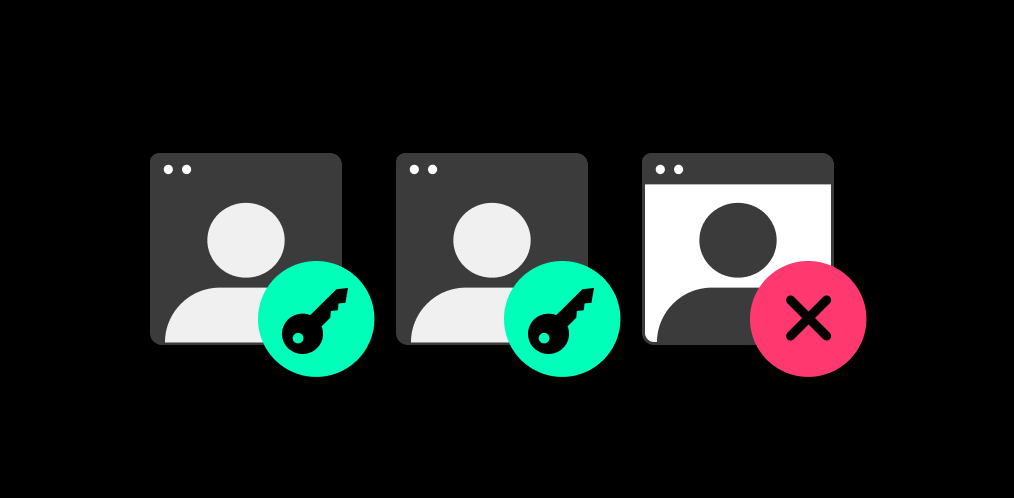
2023 OWASP API Security Top 10 Best Practices
After four long years since the original guidelines were created, the Open Web Application Security Project (OWASP) has now updated their Top 10…
{ "term_id": 162, "name": "Harold Bell", "slug": "harold-bell", "term_group": 0, "term_taxonomy_id": 162, "taxonomy": "wpx-authors", "description": "", "parent": 0, "count": 82, "filter": "raw" }

Identity and Access Management (IAM) provides a critical, foundational element of cybersecurity, which is the tracking of who users are and what each user is entitled to do in a digital environment. People tend to think of IAM as a solution, but it’s actually a framework that serves as the basis for solutions, along with a range of work processes. This article explores what IAM is, how it works, and why it’s important.
The IAM framework comprises security policies, business processes and technologies. The goal of IAM is to protect digital assets, such as data and applications, by carefully managing digital identities for users of information systems and networks. These users can be human or machine/device users. And, as IAM’s name suggests, the framework covers identity and access, which are distinct but overlapping aspects of security. Identity management is about tracking who is who, while access management is concerned with who is allowed to access a given system or network.
With an IAM framework in place, IT managers and their partners in security can control access to digital assets. The specific technologies employed run the gamut from identity directories, single sign on (SSO) solutions, and multi-factor authentication (MFA). Privileged access management (PAM) is also part of IAM, covering identity and access control for administrators.
At a high level, the technologies that implement an IAM framework cover the following functionality:
Going further into the concept of role-based access control (RBAC), it’s important to understand that IAM solutions generally allow admins to group users by access needs. The admin, following policy, might define roles based on an employee’s department, role within that department, and level of seniority. An accounting manager will (or should) have more access privileges in the accounting system than an entry-level accounting staffer. The admin can define the ability of a group of users to perform certain tasks, e.g., viewing or modifying a file. In large organizations, however, it can become a complex, cumbersome process to keep track of roles and who is allowed to do what—leading to inadvertent risk exposure. Especially in hybrid and multi-cloud environments where permission management is further complicated and each provider has their own levels of abstraction.
The “I” and “A” of IAM work differently from one another. The identity management process starts with checking a user’s login attempt with his or her profile in the identity management database. This is made possible because the IAM solution captures and records user login credentials. It also manages an organization-wide database of user identities. This can take many forms, but it usually means having a centralized directory service, realized by software like Microsoft Active Directory.
The system can then match the user by username/password pairs, first name/last name, phone number, and so forth. This is known as user authentication. It verifies that the user is whom he says he is. Today, organizations are increasingly adding MFA to the authentication process to reduce the risk of malicious actors impersonating real users. In cloud computing use cases, user authentication may take place through an identity as a service (IDaaS) provider.
In the access management process, the IAM solution maintains a record of what digital assets the user is entitled to access. This may be done through RBAC or by means of a one-off basis. Allowing a user to access a resource based on access management rules is known as authorization.

To understand why IAM is important, consider what security would look like without it. If an organization cannot authenticate its users and control their access privileges, that would result in serious security risk exposure. Anyone could access anything, with disastrous results. An ad-hoc approach, such as managing identities and access on a system-by-system basis, is deficient. In that scenario, which is still in use in many places, if an employee leaves the company, then each system must delete his or her user account. This is unlikely to happen reliably, so systems will remain vulnerable to unauthorized access.
Implemented correctly, IAM delivers a range of security benefits. These security gains, in turn, generally drive operational improvements. For example, automating identity management reduces calls to the service desk, which saves money and makes everyone more productive.
IAM improves security outcomes in more than one way. For instance, an IAM solution can spot violations of security policy, such as an unauthorized attempt to access sensitive data. The solution enables effective security policy enforcement, too, which helps with regulatory compliance as well as security posture.
Going a little deeper, IAM bolsters security by getting rid of weak passwords, which are among the most serious of all security problems—with industry data suggesting that 8 in 10 data breaches arise from deficient credential management. Mitigation of insider threats is an additional benefit of IAM. By restricting access only to authorized users, IAM keeps malicious insiders out of sensitive areas of the IT estate.
Organizations that employ artificial intelligence (AI)-based cybersecurity tools, such as extended detection and response (XDR) solutions, can benefit by letting these tools parse IAM data. The IAM solution is ideally positioned to pick up anomalies that could signal the start of a cyberattack, e.g., multiple login attempts from a suspicious IP address, and so forth.
IAM is a critical part of an organization’s security efforts. It is essential for maintaining a strong security posture and adhering to regulatory compliance schemes. IAM helps protect sensitive data, applications, and networks. It enables security policy enforcement by ensuring that only authenticated, authorized users can access the assets they are entitled to access. It’s a foundational element of a robust security program.
It’s important to consider key features when choosing an Identity Access Management (IAM) solution. Crucial features include Single Sign-On (SSO) for streamlined user access, Multi-Factor Authentication (MFA) for enhanced security, Role-Based Access Control (RBAC) for tailored permissions, and User Lifecycle Management for efficient user onboarding and offboarding.
These features collectively ensure a comprehensive IAM system. For seamless integration, consider solutions that support SAML authentication and API authentication, enabling secure access across various platforms and applications within your identity and access management framework. Prioritize IAM solutions that encompass these features for robust security and efficient user management.
Identity management and access management are crucial components of IAM systems. Identity management primarily revolves around the administration of user identities, encompassing user provisioning, authentication, and user lifecycle management. On the other hand, access management is concerned with regulating access to resources based on these established user identities.
While identity management establishes and verifies user identities, access management ensures users have the appropriate permissions to access specific resources. Together, they form a comprehensive IAM framework, combining identity and access management to secure and streamline user interactions within an organization’s digital ecosystem.
Yes, Identity Access Management (IAM) solutions play a crucial role in facilitating regulatory compliance. These systems provide features like audit trails and robust reporting capabilities, enabling businesses to demonstrate adherence to regulatory requirements. IAM ensures that access controls align with industry standards, offering a structured framework to manage, monitor, and report on user access.
To further enhance compliance measures, organizations can integrate IAM solutions with security testing practices, ensuring continuous assessment and validation of access controls. This proactive approach helps businesses maintain regulatory compliance, safeguard sensitive data, and establish a secure and compliant identity access management infrastructure.
Choosing an IAM solution that aligns with existing IT infrastructure is pivotal. Opt for solutions offering flexibility and compatibility, ensuring seamless integration. Common methods include API-based connections and connectors that bridge IAM platforms with various systems. APIs facilitate communication between IAM and existing applications, while connectors streamline integration with specific platforms.
Experience the speed, scale, and security that only Noname can provide. You’ll never look at APIs the same way again.